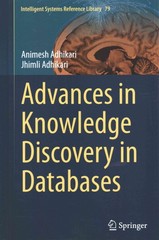Answered step by step
Verified Expert Solution
Question
1 Approved Answer
This is original protocol : ( Diagram as image uploaded ) For the above - mentioned scenario, we propose an authentication protocol that consists of
This is original protocol :
Diagram as image uploaded
For the abovementioned scenario, we propose an authentication protocol that consists of two phases, as depicted in Fig. In the enrollment phase, mea surements MDID :MCMCn each corresponding to a memristor cell from C to Cn of a smart device with an identifier DID, are captured and transmitted to the IoT Hub over a secure channel, eg by establishing a direct connection between the IoT Hub and the device in a controlled environment without any other network connection. Each cell is measured with multiple fre quencies F :ffn and amplitudes A :aan The IoT Hub stores the model ModelDID of the smart device learned by the manufacturer along with an identifier DID. In the highly unlikely case that the CNN model fails to be produced for a particular DID after a few attempts, this DID shall not be used. Also, a public key is transmitted to the smart device, which is used in the next steps of the protocol. There, lightweight algorithms using elliptic curve cryptography are used.
In the authentication phase, a challengeresponse protocol is executed. First, the smart device sends a challenge with its identifier DID to start an authentication request. Here, describes the concatenation of the message, and the first italicised segment, eg AuthRequest, is an identifier, allowing the IoT Hub and the device involved to identify and parse the relevant messages correctly. The server responds with a challenge containing a device ID DID a nonce N a cell ID CID, an amplitude a and a frequency f N is used to prevent replay attacks and can be implemented as a continuous counter or a random number. The IoT device first checks if the requested device ID DI D is equal to its own, and then measures the cell CID by applying the frequency f and amplitude a to it resulting in a measurement MCID. Afterwards, a message consisting of the DI D the previously sent nonce N and the measurement MC I D is encrypted using the previously shared publicKey, and sent to the IoT Hub. Only the IoT Hub can decrypt the message using its privateKey. The server checks if N is fresh, and chooses the right model, ModelDID based on DID. If the CNN can classify all measurements correctly using ModelDID a and f the IoT device gets authenticated, otherwise it gets rejected. After a number of unsuccessful authentication requests for the same DID, the use of that DID may be disabled.
And this one is derive from that:
First we have setup these parameters;
Public, Private key pairs
Enrollment Phase: First Device will send its Device identification DID to Server
Server will send its Public key
PUF produce a "golden" response with challenge
Device D will send "golden" response with
DID Device Challenge CDID encrypted with
Device Public key
Server will take this CDID, s DID PubDID
Decrypted with its private key and store it
Authentication Phase: Device will make an authorization request Authreq DID
Server will go to Database get relevant challenge CDID
know the relevant "golden" response, create Nonce h
Server Encrypt this challenge and Nonce and send
to Device
Device will decrypt this challenge with its private key.
Device will create response R and with Nonce send
to server back.
Hamming Distance HD is the noise.
We are comparing "golden" response noise HD compare with Response R
so let's "old proven" is okay,
So the according to original and new protocol the list of points should be answered:please do not use any Ai
Overview of the Original Protocol
Rationale for Modifications
Description of Modifications
Impact of Modifications

Step by Step Solution
There are 3 Steps involved in it
Step: 1

Get Instant Access to Expert-Tailored Solutions
See step-by-step solutions with expert insights and AI powered tools for academic success
Step: 2

Step: 3

Ace Your Homework with AI
Get the answers you need in no time with our AI-driven, step-by-step assistance
Get Started


